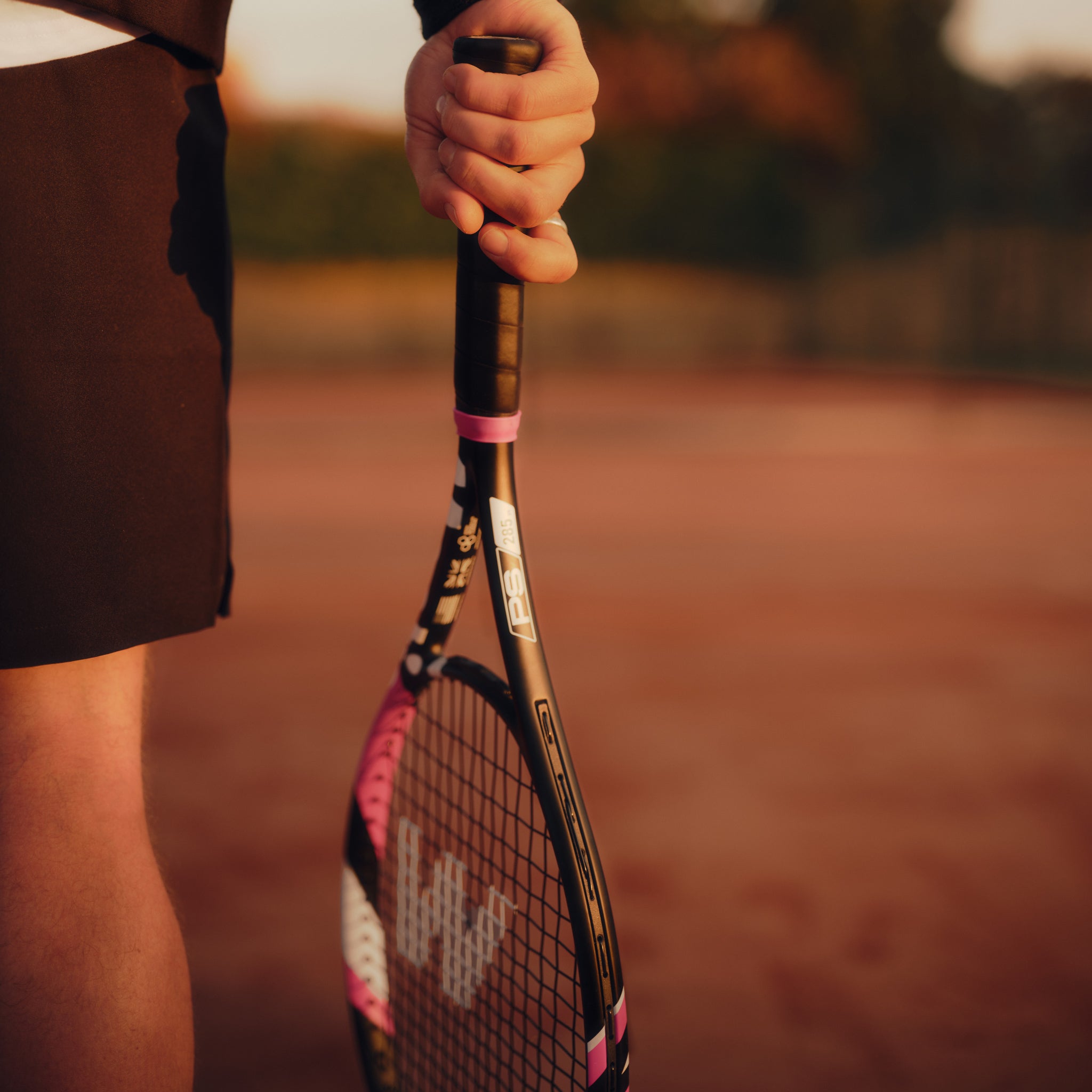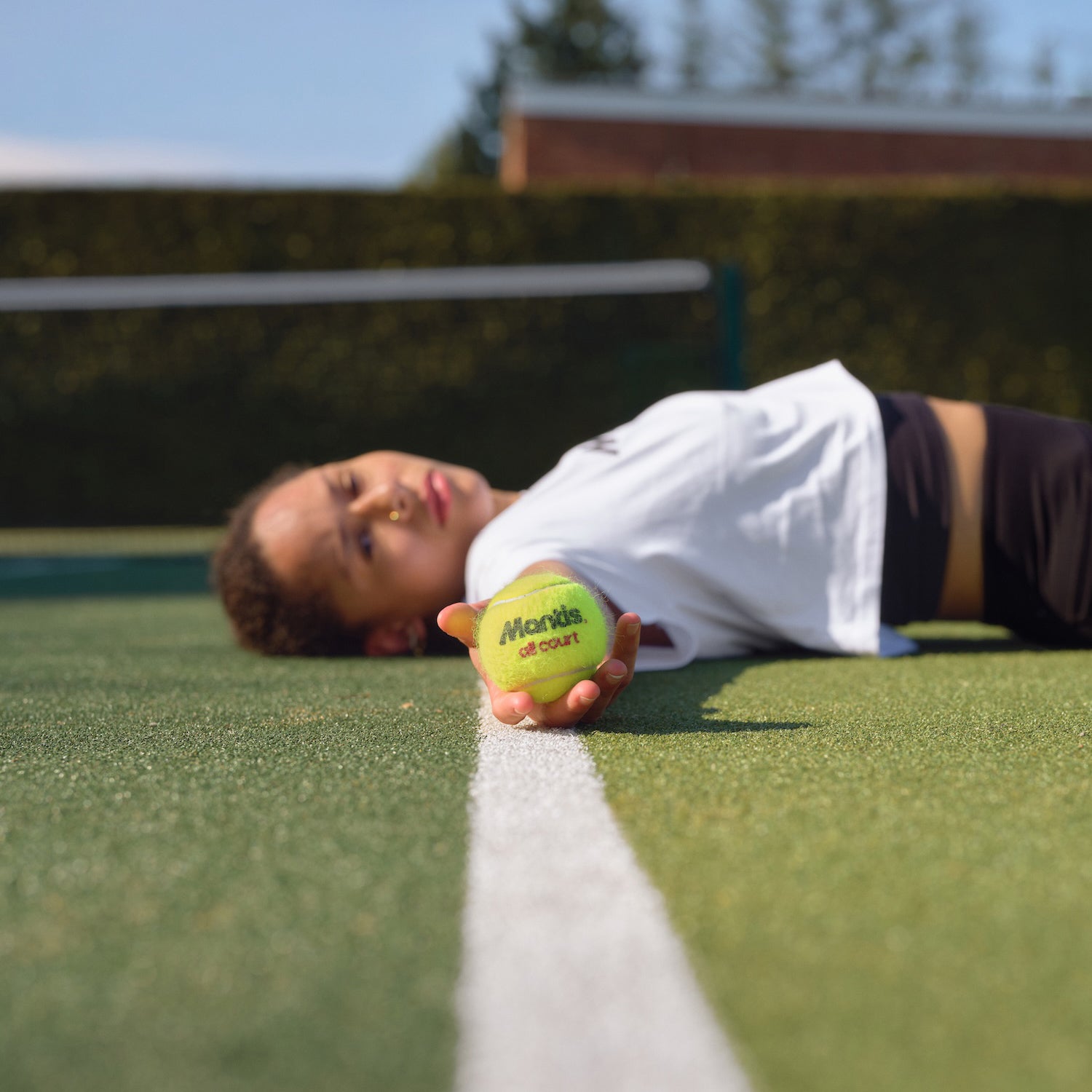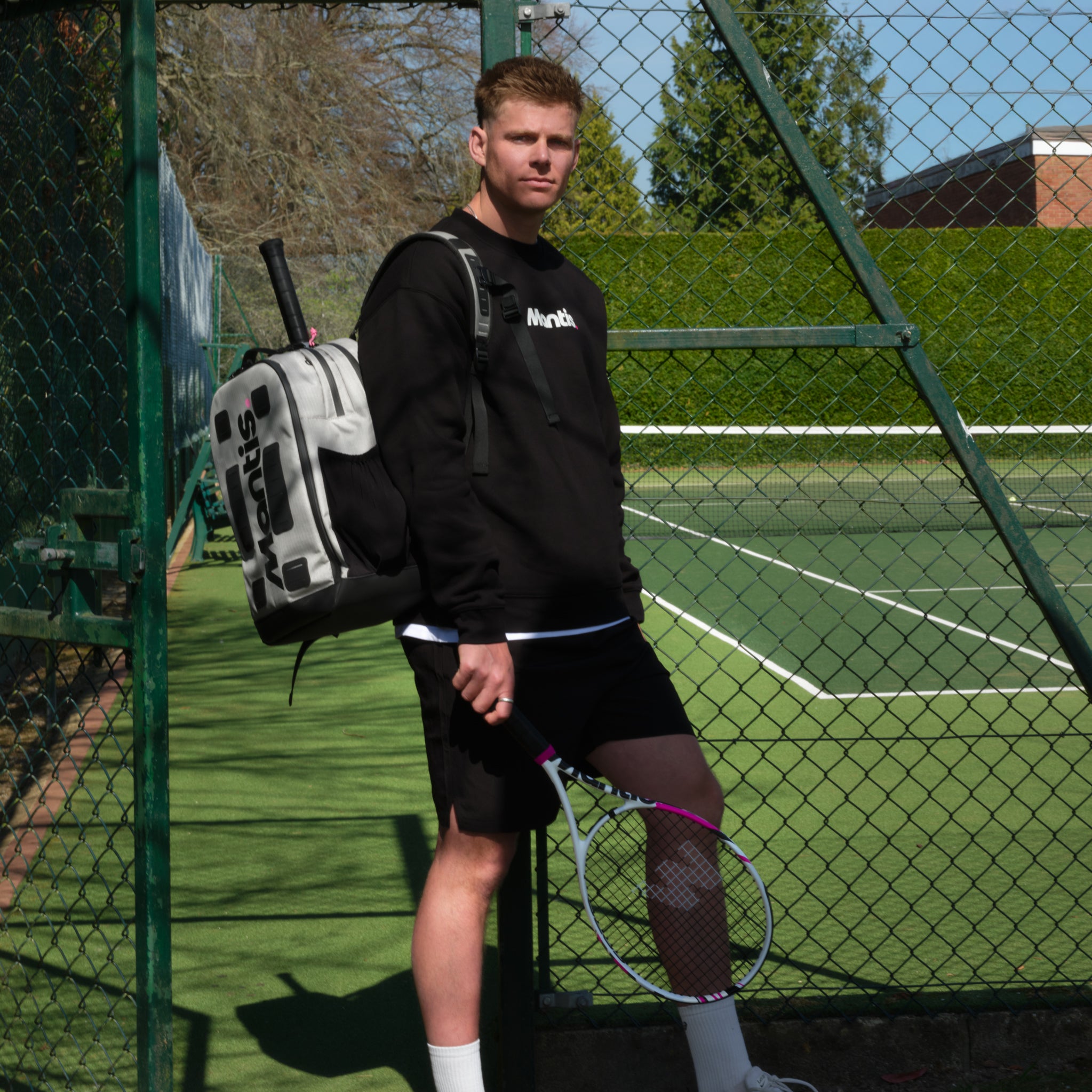
When you pick up a can of Mantis tennis balls, you’re holding dozens of hours of precision engineering, tough material science and hands-on care. Each ball is made through a carefully orchestrated sequence of steps, from raw rubber to the branded finished product. Here’s how we do it.
The 12 Steps for Making Mantis Tennis Balls
Step 1: Rubber Slug Preparation
We begin with specially compounded natural and synthetic rubber materials. These are heated and cut into pieces, referred to in the factory as “slugs”. The slug size and shape are precisely controlled, because they will form the two halves of the ball shell.
Step 2: Shell Curing
The rubber slugs are inserted into the heated cavities of a compression‐press mold. Under high temperature and pressure the rubber cures – transforming from pliable material into tough, resilient half-shells.
Step 3: Shell Surface Pre-Treatment
Once the half‐shells have emerged from the press, their mating surfaces are sand-papered and buffed to clean and prepare the seam interface. A bonding adhesive is then applied to the seam surfaces of these half-shells to prepare them for assembly into the ball core.
Step 4: Core Assembly
Next, the two prepared half‐shells are loaded into a top-and-bottom mold in a hydraulic press. Compressed air is introduced into the inner chamber until the required internal pressure is reached. The press closes, trapping the pressure inside the half‐shells, and the adhesive cures, bonding the two halves into a pressurized core.
Step 5: Core Surface Roughening
The newly formed pressurized core is then sand-papered lightly on its outer surface. This roughening helps improve the adhesive “grip” in the next stage when the felt covering is applied.

Step 6: Adhesive Coating of Core
A rubber-based adhesive is then applied uniformly to each prepared core. This is done via a tumbling operation, ensuring that each core is coated evenly and consistently—ready for felt attachment.
Step 7: Felt Panel Preparation
Meanwhile, felt panels are produced: an automated cutting machine slices felt sheets into “dog-bone” shaped pieces, which are then stacked, compressed, and placed in a dipping fixture. The edges of these felt panels are coated with adhesive—these edges will form the seam of the finished Mantis ball.
Interesting fact: Mantis tennis balls contain the highest amount of wool of any tennis ball because wool is the perfect natural material for making durable ball felt that performs really well in all conditions and on all surfaces.
Step 8: Felt Application
Using a specially engineered ball covering machine, two of those adhesive-prepared felt panels are applied to each adhesive‐coated core. The machine ensures correct orientation and alignment of the panels around the core.
Step 9: Seam Roll-down
After the felt is applied, each ball travels along a roll-down conveyor – this removes lumps, protruding seams, or wrinkles at the felt juncture so that the surface is smooth and consistent.
Step 10: Final Adhesive Cure
The felt-covered balls are placed into a hydraulic compression press once more. Heat is applied to cure the adhesive between the core and the felt panels, thereby fully bonding the felt to the core and creating the distinctive ridge formed by the pinched felt at the seam.
Step 11: Steam Tumbling & Felt Fluffing
Next the balls are tumbled in a steam-laden atmosphere. The steam restores the felt to its original thickness and loft, and also smooths out the ridge created in the previous cure step—resulting in a uniform, plush felt surface.
Step 12: Final Inspection & Branding
Finally, each Mantis ball is inspected for cosmetics: color consistency, felt adhesion, seam integrity, and surface uniformity. Once a ball passes inspection it is stamped with the Mantis logo. Then it is ready for packaging and play.
That is the full journey from raw material to finished Mantis tennis ball — each step managed to ensure high quality, consistent performance and the durability to meet the demands of serious play.
Check out the full range of Mantis tennis balls including our two models of pressurised match play tubes and our range of coaching, practise and junior balls










